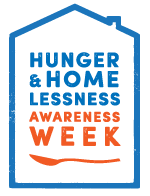It’s World Toilet Day today!
Currently, 4.5 billion people worldwide live without a household toilet that safely disposes of their waste. In 2013, the United Nations General Assembly designated November 19th as World Toilet Day — a day to mobilize individuals, organizations, governments, and the private sector to tackle the global sanitation crisis. This year’s World Toilet Day theme is wastewater.
The UN Sustainable Development Goals include a target to ensure that everyone has access to a safely managed household toilet by 2030. For this to be achieved we need everyone’s waste to take a 4-step journey:
- Containment: waste must be deposited into a hygienic toilet and stored in a sealed pit or tank separated from human contact.
- Transport: pipes or latrine-emptying services must move the waste to the treatment stage.
- Treatment: waste must be processed into a treated wastewater and waste products that can be safely returned to the environment.
- Disposal or Reuse: safely treated waste can be used for energy generation or as fertilizer in food production.
What happens when you don’t have access to a restroom? Recent stories from San Diego and Los Angeles show one answer.
In recent years, San Diego and Los Angeles have seen a massive outbreak of the Hepatitis A virus. As of November 13th, there have been 370 people hospitalized and 20 people have died from the virus. Governor Jerry Brown has declared a public health emergency to contain the epidemic.
Hepatitis A is a highly contagious liver disease that can spread easily through the homeless population because it thrives in unsanitary conditions and is primarily spread through contact with feces via surfaces or sexual contact. The homeless population is vulnerable to contracting the disease due to lack of access to proper restroom facilities.
To prevent the outbreak from spreading, Gil Chavez, the California State Epidemiologist, has stated that, “Sanitation, particularly access to toilet facilities and careful hand-washing after contact with feces and before eating, is important for reducing disease transmission… Anything that can be done to improve access to sanitary facilities for individuals who are homeless will go a long way in helping to prevent the outbreak.”
For the city of San Diego, sanitary conditions have been a concern for many years. In 2015, a grand jury report criticized the city for slow action on this issue. The report quoted: “For more than a decade the city has been advised of the need for more public restroom facilities in the downtown area for the general public, tourists, and the homeless.” The biggest pushback to implementing more public restrooms has come from businesses and downtown property owners because of the fear that it would attract more people experiencing homelessness.
Since September, San Diego has added only 4 portable restrooms to the downtown area, bringing the number of sites with public toilets to 23. The city has also added 60 hand-washing facilities.
Los Angeles is faced with a similar problem. A coalition of nonprofits and residents compared toilet access in Skid Row, a 50-block area of downtown Los Angeles with a large concentration of people experiencing homelessness, to the United Nations standards for long-term refugee camps. The audit was conducted in the winter of 2017 and found that the area was 80 toilets short of meeting the UN standard during nighttime hours. During the day, when shelter residents are emptied onto the streets, they are 164 toilets short. Even worse, many of those toilets were frequently out of service or lacked toilet paper or paper towels.
The good news? In 2012, the state of California passed the Human Right to Water Law, which includes access to adequate sanitation. The law states that every person in California has the right to safe, clean, affordable, and accessible water adequate for human consumption, cooking, and sanitary purposes. Unfortunately, due to limited financial and staff resources, so far the State Water Resources Control Board has been prioritizing drinking water access over sanitation.
So please take some time today, on World Toilet Day, to educate your community about the lack of access to public restrooms for people experiencing homelessness.
